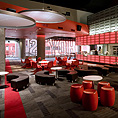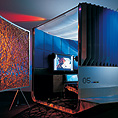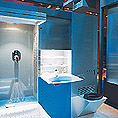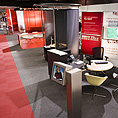











ROAD TRAFFIC AUTHORITY of NEW SOUTH WALESBLACKTOWN REGISTRYProject brief: To redesign the user experience for the RTA registry user and staff. The project required for a response to the design of the RTA motor registry for the future. The design is to act as a prototype for upgrading registry facilities across New South Wales. In responding we wanted to redefine the experience of using an RTA registry, to make it simpler, make more information available and to begin to focus more on the RTA's educational role in the community. It was important to fold in the RTA's resources in historical and training collateral while upgrading the physical and spatial experience. We addressed security and customer management strategies to create a more contemporary format. Working with Dennis Quinn we researched work processes, technology, history and staffing models. Working with Parker Design Services, the project documenting architects, we translated the research outcomes into the first built prototype site. The project was focused on a radical counter redesign and a new set of clearly identified destinations within the registry environment. New information zones have been developed and new seating patterns introduced as part of a strategy to give customers a greater sense of control. |
 |
In developing an initial reverse brief for the design and construction of the retail and licensing at Blacktown in Western Sydney we were keen to focus on identifying key objectives for the design. The RTA Motor Registries are a major touch point for RTA customers and as such must convey the image and service standards desired by the RTA and the NSW Government. We proposed that the RTA registry footprint be broken into a number of distinct destinations or business zones. Like many service providers the RTA is moving simple transactions to the internet and looking for a retail environment that facilitates more value added face to face transactions. This allows for more complex and educational activities to be conducted in the registry environment. Any proposed registry design needed be flexible to allow for this trend. The intention for this design exercise was that it represented the start of a new direction, not the final outcome. We see this process as one of evolving a new design over time. We have developed a modular scalable design that can be delivered subject to local market demand. Our approach was to define experience zones that deliver a range of service propositions while recognising and exploiting the interconnection between the service zones. |
 |
We began with a list of significant points to address: |
page: 1 | 2 |
2008 © Crowd

